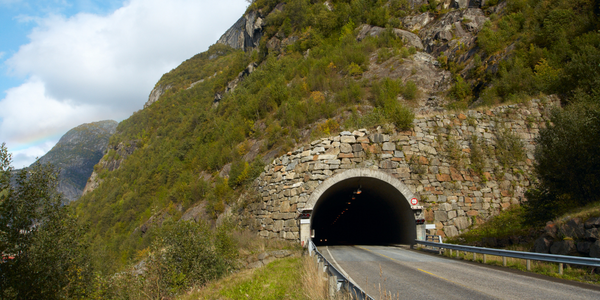技术
- 应用基础设施与中间件 - 数据库管理和存储
- 应用基础设施与中间件 - 事件驱动型应用
适用行业
- 建筑物
- 建筑与基础设施
适用功能
- 销售与市场营销
用例
- 人员跟踪与监控
- 时间敏感网络
服务
- 云规划/设计/实施服务
- 系统集成
关于客户
AdGreetz 是业界领先的 AdTech 和 MarTech 个性化平台。该公司专注于创建和分发数百万个智能、数据驱动、超个性化的广告和消息。他们的覆盖范围涵盖 26 个不同的渠道,包括电子邮件、应用、Meta、Google/YouTube、TikTok、CTV/OTT 和程序化平台。 AdGreetz 每天处理数百万次广告展示,为世界各地的客户提供服务。作为一家广告科技公司,数据是其业务的核心,而且他们拥有大量数据。该公司需要一个高性能、经济高效的解决方案来满足其数据存储和分析需求,他们在 ClickHouse Cloud 中找到了这一点。
挑战
AdGreetz 是领先的 AdTech 和 MarTech 个性化平台,专注于在 26 个不同渠道创建和分发数百万个智能、数据驱动、超个性化的广告和消息。该公司每天处理数百万次广告展示,因此需要一个高性能、经济高效的解决方案来满足其数据存储和分析需求。最初,AdGreetz 使用 AWS Athena 来满足其数据处理需求,但未能满足其日益增长的性能和数据需求。然后他们转向 Snowflake,但事实证明其成本对于他们的数据量和查询性能来说是过高的。该公司需要一种能够处理海量数据、提供快速查询时间并且符合预算的解决方案。
解决方案
AdGreetz 在 ClickHouse Cloud 中找到了他们的解决方案,该解决方案以大幅降低的成本提供高性能分析。 ClickHouse 的查询速度、丰富的功能和卓越的价值给该公司留下了特别深刻的印象。切换到 ClickHouse Cloud 后,查询时间达到了亚秒级,并提供了物化视图,而成本却比之前的解决方案 Snowflake 低了近六倍。 AdGreetz 还赞扬了 ClickHouse 的客户支持,响应迅速,有助于解决问题。 ClickHouse 与 AdGreetz 技术堆栈的集成是无缝的。该公司每天处理 5-600 万次广告展示事件,高峰期时处理量高达 20-3000 万次。为了管理这些事件,他们利用 Cloudflare 工作线程单独异步处理事件。 ClickHouse 与 HTTP 请求的兼容性以及直接插入 JSON 负载而无需 SQL 格式转换简化了架构,并且消除了对 Kafka 等聚合组件的需要。
运营影响
数量效益

Case Study missing?
Start adding your own!
Register with your work email and create a new case study profile for your business.
相关案例.

Case Study
Energy Saving & Power Monitoring System
Recently a university in Taiwan was experiencing dramatic power usage increases due to its growing number of campus buildings and students. Aiming to analyze their power consumption and increase their power efficiency across 52 buildings, the university wanted to build a power management system utilizing web-based hardware and software. With these goals in mind, they contacted Advantech to help them develop their system and provide them with the means to save energy in the years to come.

Case Study
IoT System for Tunnel Construction
The Zenitaka Corporation ('Zenitaka') has two major business areas: its architectural business focuses on structures such as government buildings, office buildings, and commercial facilities, while its civil engineering business is targeted at structures such as tunnels, bridges and dams. Within these areas, there presented two issues that have always persisted in regard to the construction of mountain tunnels. These issues are 'improving safety" and "reducing energy consumption". Mountain tunnels construction requires a massive amount of electricity. This is because there are many kinds of electrical equipment being used day and night, including construction machinery, construction lighting, and ventilating fan. Despite this, the amount of power consumption is generally not tightly managed. In many cases, the exact amount of power consumption is only ascertained when the bill from the power company becomes available. Sometimes, corporations install demand-monitoring equipment to help curb the maximum power demanded. However, even in these cases, the devices only allow the total volume of power consumption to be ascertained, or they may issue warnings to prevent the contracted volume of power from being exceeded. In order to tackle the issue of reducing power consumption, it was first necessary to obtain an accurate breakdown of how much power was being used in each particular area. In other words, we needed to be able to visualize the amount of power being consumed. Safety, was also not being managed very rigorously. Even now, tunnel construction sites often use a 'name label' system for managing entry into the work site. Specifically, red labels with white reverse sides that bear the workers' names on both sides are displayed at the tunnel work site entrance. The workers themselves then flip the name label to the appropriate side when entering or exiting from the work site to indicate whether or not they are working inside the tunnel at any given time. If a worker forgets to flip his or her name label when entering or exiting from the tunnel, management cannot be performed effectively. In order to tackle the challenges mentioned above, Zenitaka decided to build a system that could improve the safety of tunnel construction as well as reduce the amount of power consumed. In other words, this new system would facilitate a clear picture of which workers were working in each location at the mountain tunnel construction site, as well as which processes were being carried out at those respective locations at any given time. The system would maintain the safety of all workers while also carefully controlling the electrical equipment to reduce unnecessary power consumption. Having decided on the concept, our next concern was whether there existed any kind of robust hardware that would not break down at the construction work site, that could move freely in response to changes in the working environment, and that could accurately detect workers and vehicles using radio frequency identification (RFID). Given that this system would involve many components that were new to Zenitaka, we decided to enlist the cooperation of E.I.Sol Co., Ltd. ('E.I.Sol') as our joint development partner, as they had provided us with a highly practical proposal.

Case Study
Intelligent Building Automation System and Energy Saving Solution
One of the most difficult problems facing the world is conserving energy in buildings. However, it is not easy to have a cost-effective solution to reduce energy usage in a building. One solution for saving energy is to implement an intelligent building automation system (BAS) which can be controlled according to its schedule. In Indonesia a large university with a five floor building and 22 classrooms wanted to save the amount of energy being used.

Case Study
Powering Smart Home Automation solutions with IoT for Energy conservation
Many industry leaders that offer Smart Energy Management products & solutions face challenges including:How to build a scalable platform that can automatically scale-up to on-board ‘n’ number of Smart home devicesData security, solution availability, and reliability are the other critical factors to deal withHow to create a robust common IoT platform that handles any kind of smart devicesHow to enable data management capabilities that would help in intelligent decision-making

Case Study
Splunk Partnership Ties Together Big Data & IoT Services
Splunk was faced with the need to meet emerging customer demands for interfacing IoT projects to its suite of services. The company required an IoT partner that would be able to easily and quickly integrate with its Splunk Enterprise platform, rather than allocating development resources and time to building out an IoT interface and application platform.








